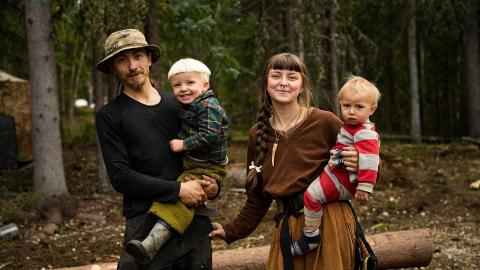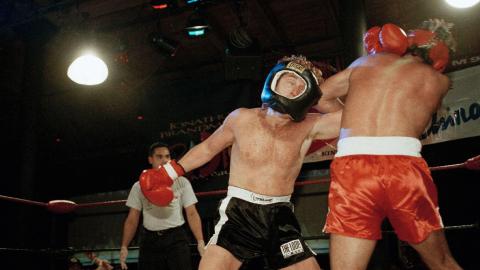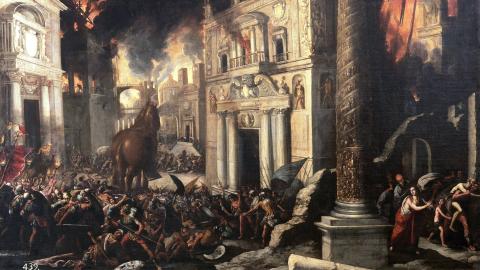Empire Builders is a new six-part series that explores the rise and fall of history's greatest civilisations. The show explores the most significant monuments left behind by these great empires and discovers how they each left a legacy that still affects the world today.
Empire Builders is airing Wednesdays at 10pm on Sky HISTORY as part of the Ancient Mysteries Season.
The Roman Empire, one of history's most iconic and impressive achievements. Spanning from around 190 AD to the deposition of Emperor Romulus Augustus in AD 476, at its height the Roman Empire had a population of around 90 million people.
From overzealous tax to military failures to environmental change, historians have attributed all sorts of reasons to its dramatic decline. And it can even be argued that the Roman Empire didn't really fall until many years later, as the Byzantine Empire formed and continued for another 1,000 years.
Here are 7 of the main theories and explanations for why the Ancient Roman Empire ended:
1. Cash Flow Problems
The Roman Empire was built upon conquering, raiding and utilising other nation's lands. However, by around 300 AD the Roman Empire was dealing with a considerable "cash flow" problem. This is because they were literally running out of goods and resources to use from their conquered lands and as a result had less money to invest in conquering new places.
The Romans also heavily relied on slave labor, but with expansion grinding to a relative halt, they were unable to acquire new slaves and suffered a major slave labor shortage.
To cope with these declines, taxes were increased. However, this simply further divided the rich and poor and many wealthy Romans moved into hiding or set up separate compounds to avoid paying such high taxes.
With such a decrease in readily available cash, it rapidly became more and more difficult for the Romans to sustain such a vast and costly empire.
2. The Barbarians
As we see in Barbarians Rising both disgruntled Romans and members of Germanic tribes became 'Barbarians.' These were groups of militia and tribes that sought to overthrow the Romans and prevent them from further invading their lands. While it wasn't until AD 476 when Barbarian Odoacer disposed of Emperor Augustus, the Romans were plagued by the Barbarians for many decades leading up to this point.
Battles between the Romans and Barbarians were costly and demoralising for the Romans, and from a historian's view point very much symbolised the beginning of the end for Ancient Rome.
3. The Rise of the Byzantine Empire
During the late period of the Roman Empire, there was a deliberate divide between the West and Eastern Roman Empires. The Western part was centered in Milan while the Eastern part in Byzantium. Originally, this was created by the Roman Emperor Diocletian to make the magnitude that was now the Roman Empire easier to govern.
However, it actually led to both sides gradually drifting apart and forming their own entities. While the west began to decline economically and territory wise, the eastern section (later known as the Byzantine Empire) went from strength to strength in wealth and expansion.
With such boosted wealth, the eastern section was better prepared to fight off the Barbarians, who then diverted their attention primarily to the western Empire - only adding to its increased vulnerability.
4. Mistreatment of the Germanic Tribes
The Barbarians weren't always the Romans enemy, in fact they were feared much less so than the Huns. The Eurasian Huns tribe began invading Northern Europe in the late fourth century, physically forcing many Germanic tribes into the Roman Empire's territories.
Begrudgingly the Romans accepted them into their lands, but severely mistreated them, from enslaving some and to deliberately starving and torturing others as a means to 'set an example' and encourage them to toe the line.
This worked to the rising Barbarians advantage, as they were able to round up and persuade many abused Germanic tribe members to join them in their pursuit of dismantling Rome.
5. Political Instability
From 200AD to the end of the Roman Empire, there were a multitude of Roman Emperors murdered or replaced, making for a severely unstable and demoralised government system. Emperor Diocletian in 293 attempted to increase stability by introducing a tetrarchy by dividing the Empire into four, and having a separate emperor lead each territory.
Unfortunately, this turned out to be less than a stellar idea, as with extra emperors this only caused more rivalries and further divides and rifts between territories.
With such an unstable political structure, it became noticeably obvious to both Romans and outsiders that Rome's once impressive power was now on a downhill slide.
6. The Rise of Christianity
The Romans advocated a fairly liberal religious practice. They introduced their Gods and religion to the new peoples they conquered and also added and adapted many of theirs as they went along. The rise of Christianity changed all this, and as it began to spread across Europe, the traditional Roman belief that placed the Emperor as having divine status was rejected by Christians.
In 380 AD, Christianity became the Roman state religion. Although the rise of Christianity only plays a small part in the demise of the Roman Empire, it is important nonetheless, as it shows a momentous shift away from traditional Roman values and beliefs.
7. Environmental Factors
An additional theory is that land across the Empire was over farmed, causing it to become unusable and resulting in major crop decline. For example salinization occurred, particularly in the North African territories, which essentially made the land impossible to grow crop on.
The decline in farming forced many into the Roman cities, which weren't designed for such massive populations. Overpopulation problems became especially apparent in the latter period of the Empire, and led to widespread poor plumbing, increased disease and even food shortage in the Roman cities.
















